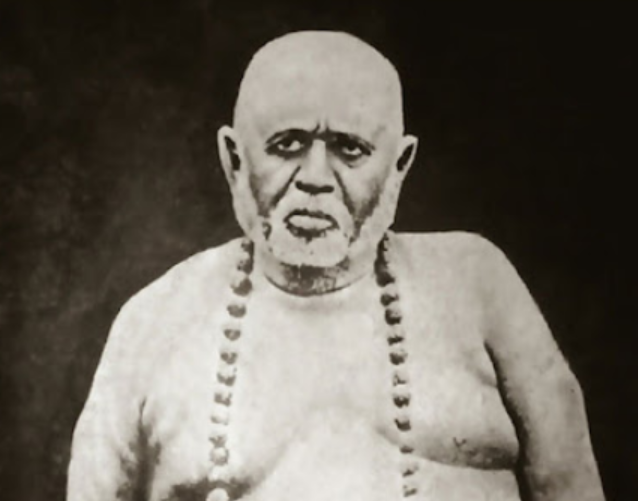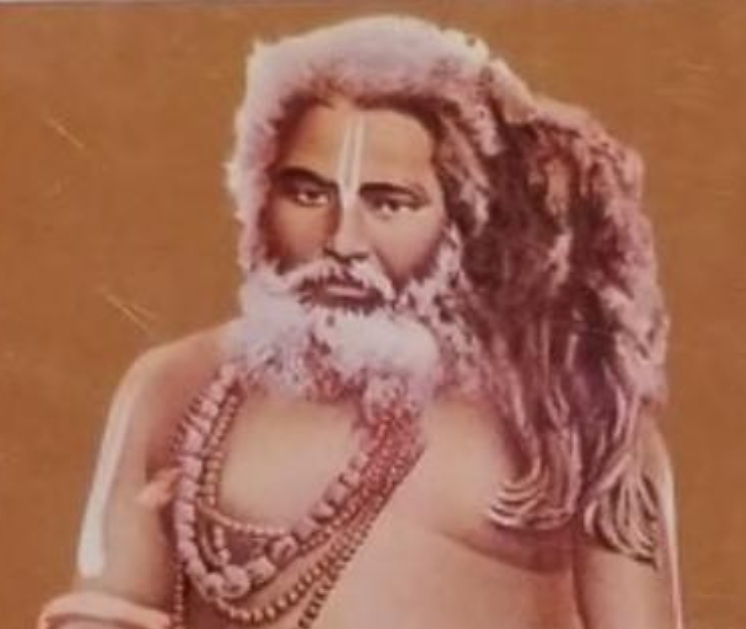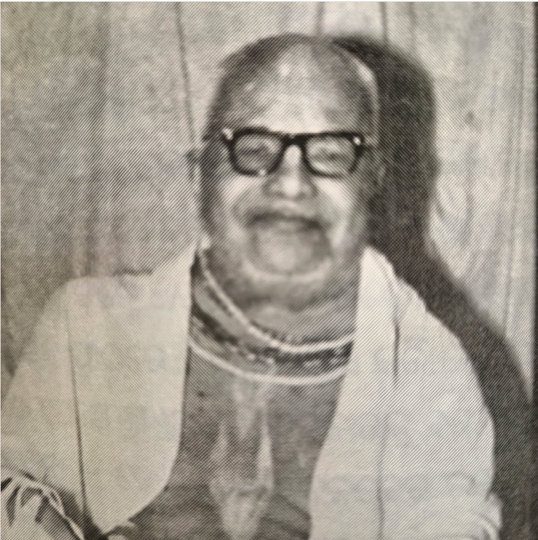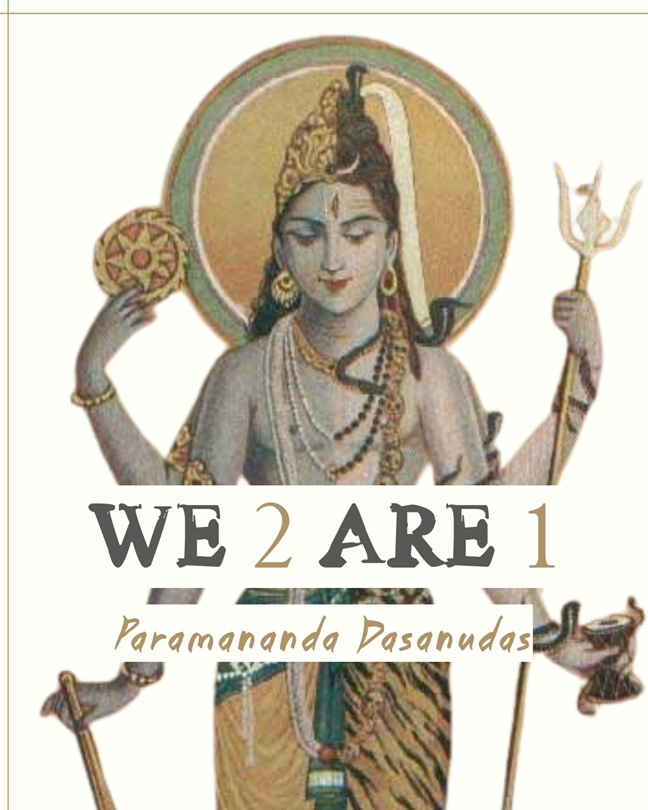
Mayapur was historically known as Miyanpur, a Muslim land, and not the original Nabadwip.
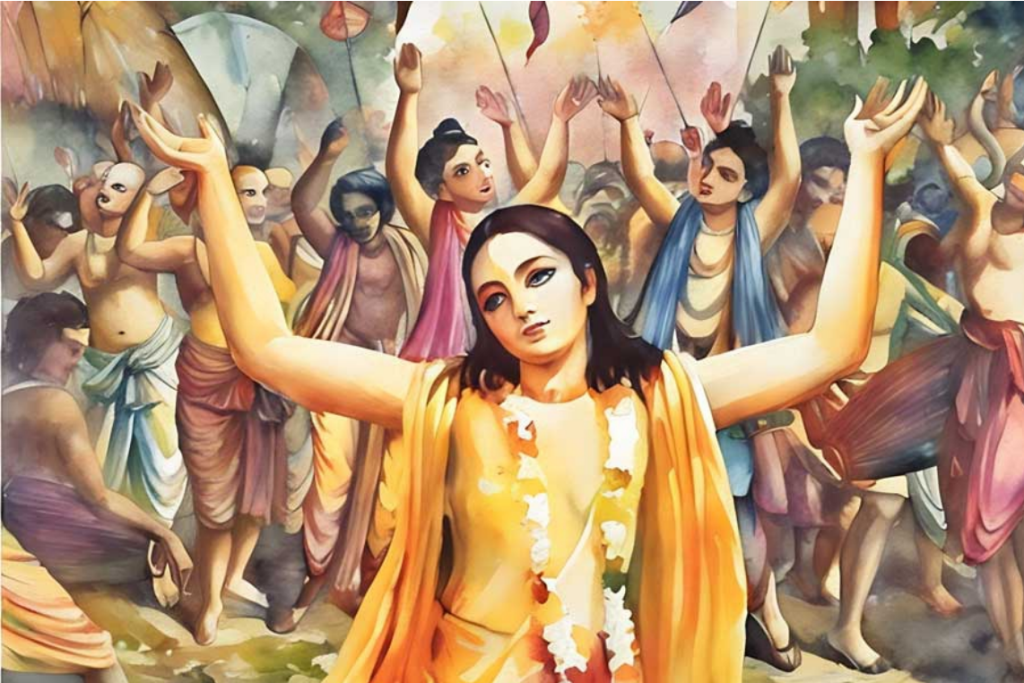
Raj Poddar
14 March 2025
Anandabazar Patrika | Bangla News
Edited by Paramananda Dasanudas
The birthplace of Sri Chaitanya is not Mayapur!
What does history tell us?
Where was Mahaprabhu born?
Chaitanya Dev was born on the day of Dola Purnima.
Like his disappearance, different sages have different opinions about his birthplace.
What does 550 years of history tell us?
Navadwip is a village in Tribhuvan.
Where Chaitanya-Gosāī appeared.
Chaitanya Bhagavata – Vrindavana Dasa Thakur
An ISKCON advertisement at the Kolkata airport reads, “Mayapur: The Birthplace of Sri Chaitanya Mahaprabhu.” This statement is not only displayed at the Kolkata airport but also in Mayapur and various surrounding areas. For several years, Mayapur has been promoted with great fanfare as the birthplace of Sri Chaitanya. But is Mayapur really the birthplace of Chaitanya? In various biographical texts about Chaitanya, including the ‘Chaitanya Bhagavata’, his birthplace is mentioned as Navadwipa; how then did the name Mayapur suddenly become associated with his birth? What does history say? Until 1890-94 AD, there was no dispute
regarding Navadwip as the birthplace of Chaitanya Mahaprabhu, and this controversy was created by Kedarnath Dutta.
Who is this Kedarnath Dutt?
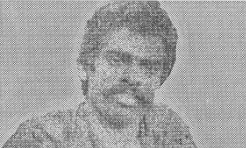
Kedarnath Dutta was a Deputy Magistrate and Deputy Collector during the British period. A great scholar of Vaishnava scriptures, he approached the Gosais of Navadwip to be initiated into the Vaishnava religion; however, they refused to initiate him, possibly because he was a Kayastha. After being rejected by the Goswamis of Navadwip, he took initiation from Bipinvihari Goswami of Baghnapara in 1886 AD and received the title of ‘Bhaktivinoda’ from the Goswamis of the Baladev-Krishna temple there. Following this, he purchased land on the opposite side of the Bhagirathi near Navadwip, declared it ‘Mayapur,’ and began working for his own interests.
Before this, there was no place called ‘Mayapur’; the eastern bank of the Ganges was known as Miyapur. This Muslim-dominated area was the burial site of Chand Qazi, where poor Muslim fishermen lived. In various government documents and survey designs of that time, this area was referred to as Miyapur. The Revenue Survey map of 1854 and the “Village Directory of Nadia” from 1886 both mention this place as Miyapur.
Why did Kedarnath want to change the birthplace of Chaitanyaby renaming the Miyapur area as Mayapur ?
According to the eminent Radha Banga and Nabadwip researcher Yagneshwar Chowdhury, “Kedarnath committed this act to satisfy his desire for revenge after being humiliated by the rejection of the Goswamis of Nabadwip. Being closely associated with the British government, he was quite influential; as a Deputy Magistrate and Deputy Collector, this task became easy for him.” Kedarnath then set out to implement his plan. On Sunday, 2nd Magh, 1894, he called a meeting at Krishnanagar AV School, attended by the prominent and respected people of the city. During that meeting, he shared a strange dream; he expressed his desire to spend some time in Vrindavan on the banks of the Yamuna to engage in sadhana and bhajans. While staying in Tarakeswar, he dreamed that the Lord had told him, “You will go to Vrindavan; what will you do about the work that is near your house in Nabadwip?” On that journey, he returned and circumambulated Navadwip, feeling distressed after visiting the Lord’s place of entertainment, yet finding nothing. One night, he, along with his son Kamal and a clerk, climbed onto the roof to look around and saw a luminous building on the north bank of the Ganges, accompanied by a palm tree. After visiting the site, they discovered it was near a water body called Ballal Dighi.
Once again, Kedarnath received a dream message from the Lord and, following the instructions of the book “Bhakti Ratnakara” by Narahari Das, he circumambulated the nine islands of Navadwipa. After walking through various places, he learned from the locals that it was believed to be the birthplace of the Lord. Everyone in the meeting accepted his words. And identified that place as the birthplace of Mahaprabhu and allowed him to serve and worship Mahaprabhu. According to Shantiranjan Dev, president of the Navadwip Purattva Parishad, the reason for this agreement was:
– 1. Kedarnath Dutt invited only those who were loyal to him.
– 2. Being a Deputy Magistrate of the British government, no one present had the courage to speak in the face of the Deputy Collector.
– 3. The people present were not mentally prepared for such a sudden proposal regarding the birthplace of Chaitanyadev. That is why everyone agreed and gave permission.
Nabadwip does not means nine islands
Incidentally, there is no basis for the theory that Nabadwip means nine islands. The nine islands mentioned in Narahari Chakraborty’s ‘Bhakti Ratnakara’ are Simanta Dwip, Antadwip, Godrum Dwip, and Madhya Dwip on the eastern bank of the Ganges; and Kol Dwip, Ritu Dwip, Jahnu Dwip, Modrum Dwip, and Rudra Dwip on the western bank of the old channel of the Ganges.
Although Narahari, the proponent of the nine islands, spoke about these, he never claimed that Nabadwip is a collection of nine islands; rather, he wrote that the city of Nabadwip is surrounded by nine islands, stating, “Joy Joy Nadia Nagar. The supreme beauty surrounded by nine islands.” If we accept Narahari’s statement, Nabadwip does not mean nine islands; the city of Nabadwip, along with the nine surrounding islands, makes a total of ten islands, rendering
the concept of circumnavigating nine islands baseless. Given Nabadwip’s location on the banks of the Ganges, it has experienced floods and erosion at various times, causing many parts of the original Nabadwip to now lie beneath the Ganges; thus, the current Nabadwip is, in fact, new— with ‘Natun’ meaning ‘new,’ Nabadwip is derived from Natun Dwip. Many prominent researchers believe that Chaitanya’s birthplace is now submerged in the Ganges, specifically in the ancient Mayapur area of Nabadwip. Kedarnath Dutta attempted to rename Miyapur as Mayapur to establish it as Chaitanya’s birthplace, which created conflict with his initiator (Diksha Guru), Bipin Bihari, who ultimately abandoned him in anger. Despite this rejection, Kedarnath remained committed to his plan, intensifying his
preaching efforts under the title of ‘Bhaktivinod’ that Gurudev had bestowed upon him.
From Miyapur to Mayapur
In 1300 Bengal, he founded the ‘Sri Sri Navadwip Dham Pracharani Sabha’ and organized a grand ‘Mayapur Utsav’ to promote Miyapur by renaming it Mayapur. In response, Kanti Chandra Radhi, a prominent scholar of Navadwip, distributed a booklet titled ‘Navadwip Tattva’ at the ‘Mayapur Utsav,’ presenting accurate information; however, he ultimately receded in the face of Kedarnath’s influence and resources, gradually fading into obscurity as Kedarnath launched a widespread campaign to establish Mayapur as Chaitanya’s birthplace.
Vimala Prasad Dutta
When ‘Bhaktivinoda’ Kedarnath Dutta passed away in 1914, his successor, his fifth son Vimala Prasad Dutta, later named Srila Bhaktisiddhanta Saraswati (by himself), carried forward his father’s plans. In 1918, he established the Sri Chaitanya Math in Miyapur, also known as Mayapur.
Abhay Charan Dey
In 1932, Abhay Charan Dey, a member of a prominent family in Kolkata, took initiation from Bhaktisiddhanta Saraswati and was named Prabhupada Srila Abhay Charanarvinda Bhaktivedanta Swami, or simply AC Bhaktivedanta Swami, who became the embodiment of modern Mayapur. In 1965, Bhaktivedanta Swami traveled to America and, in 1966, founded the ‘Krishna Bhavanamrita Sangha,’ which later became known as the International Society for Krishna Consciousness (Iskcon), with Mayapur as its headquarters.
Sri Chaitanya Mahaprabhu
Sri Chaitanya Mahaprabhu, the youngest son of Jagannath Mishra and Sachidevi, was born on Saturday, 23rd Falgun, 1407 Saka (28th February 1486 CE) in Nabadwip. According to Sanskrit scholar and researcher Shri Shuvendu Siddhant, “It is impossible to compare presentday Navadwip with that of the 15th-16th century. The Navadwip of that era bears no resemblance to today’s Navadwip. The course of the Ganges has shifted over time due to severe floods and erosion, causing the water flow from the west side to move to the east. The northern
part of Navadwip, where Chaitanya was born, was particularly affected by these floods.
Chaitanya’s father, Jagannath Mishra, was not wealthy, and it’s natural that their mud house was swallowed by the earth during the devastating flood. No attempt has been made to accurately identify that location.”
1792
This terrible erosion began in 1780. About forty years later, Ganga Govinda Singh, the Dewan of Lord Hastings and a great devotee of Chaitanya, started the work of identifying Chaitanya’s birthplace. He was a highly skilled worker in the Land Survey Department.In 1792, Dewan Ganga Govinda identified Chaitanya’s Bhadrasan and established a large temple. However, in 1818, severe erosion of the Ganges resumed, bringing it dangerously close to the temple. By 1823, the relentless erosion caused that grand temple to completely vanish into the Ganges. By 1870, Brajmohan Das Babaji, formerly known as Radha Kishor Singh, commenced the excavation of this temple in search of the truth (under the guidance of Siddha Sri Ramdas Babaji Maharaj from the Sri Sri Radharaman Charan Das Dev Parivar). A skilled architect, he funded his efforts with personal savings, setting up a hut on Ramchandrapur land to work alone. Lacking government support, he faced insults, slander, and ridicule during his endeavors
(the long story tells that he was brutally beaten and thrown into the Ganges, half dead, by the Miyapur preaching force). Even after his funds depleted, Brajmohan Das Babaji Maharaj begged from house to house for money and, through his excavations, uncovered several stones that guided the temple’s architecture, though those stones were also stolen. Tragically, he passed away before completing his work. According to Shantiranjan Deb, president of the Navadwip Purattva Parishad, While the effort to discover the actual Bhadrasan of Sri
Chaitanyadev was made later, it inexplicably yielded no results.
In an era where modern technology is revealing centuries of history, is it really that difficult to trace the history of just 550 years?
Despite repeated appeals to the administration, this initiative was finally
launched at the government level during the tenure of then-Chief Minister Buddhadev Bhattacharya, but it was soon halted. The reason remains a mystery.

